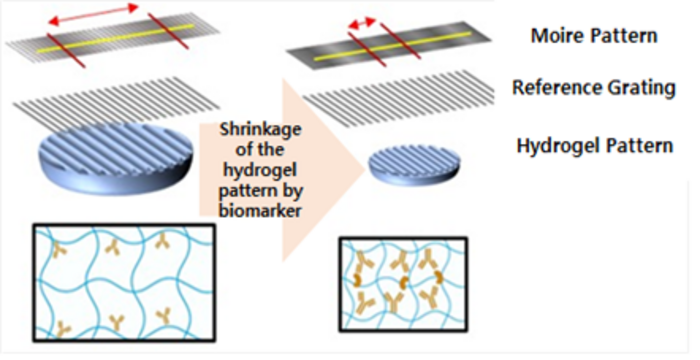COLUMBUS, Ohio – Findings from a phase III clinical trial for advanced lung cancer patients could help oncologists better predict which patients are likely to receive the most benefit from immunotherapy as a first-line treatment based on the unique molecular characteristics of their tumor, according to a new study reported by a global team led by David Carbone, MD, PhD, of The Ohio State University Comprehensive Cancer – Arthur G. James Cancer Hospital and Richard J. Solove Research Institute (OSUCCC – James).
In this study, researchers compared the effectiveness of the immunotherapy drug nivolumab (pronounced "nye VOL ue mab," marketed at Opdivo), with standard-of-care chemotherapy in 541 patients with previously untreated or recurrent non-small cell lung cancer (NSCLC) that expressed PDL-1 antibodies.
Nivolumab is part of a class of immunotherapy drugs known as PD-1 blocking antibodies. These drugs work by targeting the PDL-1 receptor — a known immunotherapy biomarker for lung and other cancers — to boost immune responses to the cancer.
Patients were randomized to receive either immunotherapy or standard-of-care chemotherapy. About 60 percent of patients treated on the trial ultimately crossed over to the immunotherapy treatment arm due to disease progression.
Results from this new study showed that nivolumab did not result in longer progression-free survival compared with chemotherapy in the overall population. The response rate for patients receiving nivolumab was 26.1 percent, with a 12.1 month median duration of response before disease progression. The response rate for patients treated on the chemotherapy arm was 33.5 percent, but median duration of response was just 5.7 months before disease progression.
"The good news is that we discovered that a subset of patients who had both high tumor mutation burden and high PDL-1 positive status did experience a significant benefit from immunotherapy," says Carbone.
Patients with both high tumor mutation burden and high PDL-1 positive status had a 75 percent response rate compared with a 16 percent response rate to immunotherapy among patients with low mutation burden and low PDL-1. These same two groups had 25 percent and 23 percent response rates, respectively, when treated with chemotherapy, showing that these markers were selective for immunotherapy.
Understanding a patient's overall tumor burden through genomic testing, says Carbone, could help identify patients most likely to benefit from immunotherapy before therapy ever begins.
"This study is an important step toward understanding the impact of tumor mutation burden and PDL-1 in immunotherapy response. This data shows we should evaluate these two factors independently to most accurately define who will benefit from immunotherapy," says Carbone.
The findings are reported in the June 22, 2017, issue of the New England Journal of Medicine.
###
This Bristol-Myers Squibb-funded clinical trial involved more than 29 cancer centers in five countries. Coauthors include Martin Reck, MD, PhD, Luis Paz-Ares, MD, Benjamin Creelan, MD, Leora Horn, MD, Martin Steins, MD, PhD, Enriqueta Felip, MD, Michel M. van den Heuvel, MD, Tudor-Eliade Ciuleanu, MD, Firas Badin, MD, Neal Ready, MD, T. Jeroen Hiltermann, MD, Suresh Nair, MD, Rosalyn Juergens, MD, PhD, Solange Peters, MD, PhD, Elisa Minenza, MD, John Wrangle, MD, Delvys Rodriguez Abreu, MD, Hossein Borghaei, DO, George Blumenschein, Jr., MD, Liza Villaruz, MD, Libor Havel, MD, Jana Krejci, MD, Jesus Corral Jaime, MD, Han Chang, PhD, William Geeze, PhD, Prabhu Bhagavatheeswaran, PhD, Allen Chen, MD, and Mark Socinski.
About the OSUCCC – James
The Ohio State University Comprehensive Cancer Center – Arthur G. James Cancer Hospital and Richard J. Solove Research Institute strives to create a cancer-free world by integrating scientific research with excellence in education and patient-centered care, a strategy that leads to better methods of prevention, detection and treatment. Ohio State is one of 48 National Cancer Institute (NCI)-designated Comprehensive Cancer Centers and one of only a few centers funded by the NCI to conduct both phase I and phase II clinical trials on novel anticancer drugs sponsored by the NCI. As the cancer program's 308-bed adult patient-care component, The James is one of the top cancer hospitals in the nation as ranked by U.S. News & World Report and has achieved Magnet designation, the highest honor an organization can receive for quality patient care and professional nursing practice. With 21 floors and more than 1.1 million square feet, The James is a transformational facility that fosters collaboration and integration of cancer research and clinical cancer care. Learn more at cancer.osu.edu.
Media Contact
Amanda Harper
[email protected]
614-685-5420
http://medicalcenter.osu.edu/Pages/index.aspx
############
Story Source: Materials provided by Scienmag





